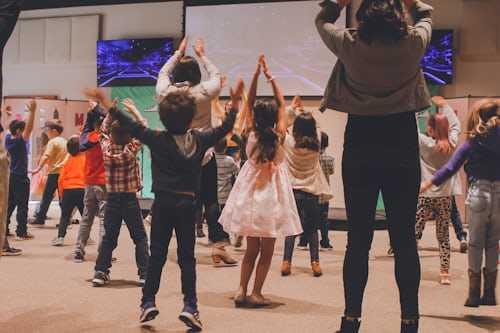Moving in Sync Creates Surprising Social Bonds among People
Curated from: scientificamerican.com
Ideas, facts & insights covering these topics:
4 ideas
·1.25K reads
1
Explore the World's Best Ideas
Join today and uncover 100+ curated journeys from 50+ topics. Unlock access to our mobile app with extensive features.
Moving Together In Sync
- The synchronicity that is created while moving together in a simultaneous and coordinated manner results in strong social bonding, and well-being, according to new research.
- Activities like the parading, line dancing and crew rowing, which usually have synchronous movements, allows humans to bond together all at once.
- Even in the animal kingdom, birds, dolphins, and fireflies synchronize their actions, displaying coordinated behaviour.
84
432 reads
Spontaneous Synchronicity
We tend to sync ourselves with others without even realizing it. People wave or clap at the same time in concerts, rocking in sync. A study showed that if two people are in a rocking chair, they will automatically start rocking it in sync with each other.
This silent conversation of movement results in a special bonding and closeness towards each other. This results in people liking each other, being generous and cooperative towards each other, reducing racial or economical bias. This behaviour is even seen in small children.
76
261 reads
Dancing Together Since Ancient Times
Early humans devised ways to be and stay together using the same techniques, albeit unconsciously.
Voices and body movements synced together during traditional folk dances in various cultures helped people bond together.
73
259 reads
The Brain’s Reward Center And Synced Movement
Moving together in sync released endorphins, the feel-good hormones that are the neurochemical adhesive of human relations.
The reward centre of the brain, the right caudate, is stimulated and creates a positive feedback loop among the people in sync.
71
300 reads
IDEAS CURATED BY
Alana F.'s ideas are part of this journey:
Learn more about personaldevelopment with this collection
How to stay motivated
How to create a workout routine
Proper form and technique for home workouts
Related collections
Similar ideas
1 idea
Why Your Brain Needs More Downtime
scientificamerican.com
3 ideas
The Scientific Underpinnings and Impacts of Shame
scientificamerican.com
4 ideas
The Psychology of Social Status
scientificamerican.com
Read & Learn
20x Faster
without
deepstash
with
deepstash
with
deepstash
Personalized microlearning
—
100+ Learning Journeys
—
Access to 200,000+ ideas
—
Access to the mobile app
—
Unlimited idea saving
—
—
Unlimited history
—
—
Unlimited listening to ideas
—
—
Downloading & offline access
—
—
Supercharge your mind with one idea per day
Enter your email and spend 1 minute every day to learn something new.
I agree to receive email updates

